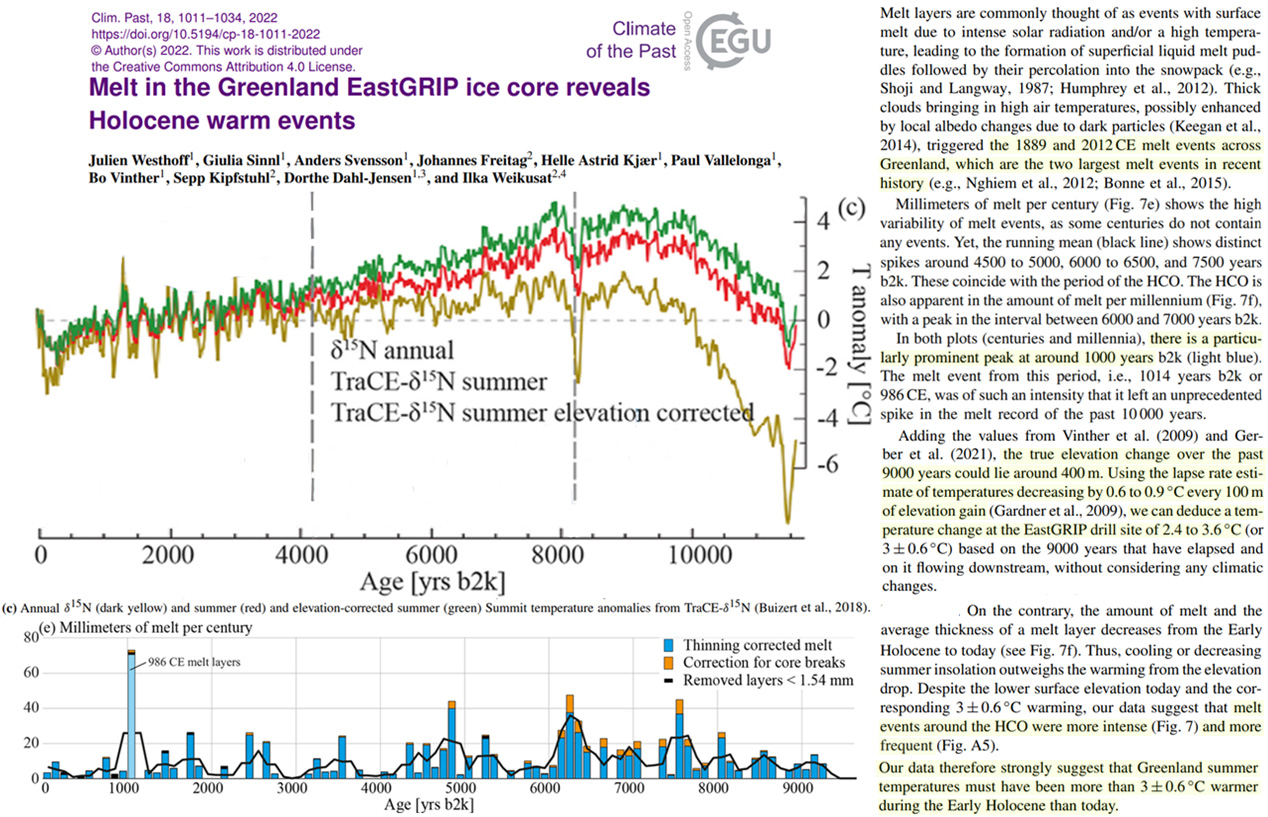
What this also tells us is that the ice cap has been getting slowly colder since around 8000 years ago. This lines up with the desertification of the Sahara and the whole Middle East.
Before that the climate was deeply influenced by the continuing melt of the Northern Ice Cap. This tells us that the primary melt post Pleistocene Nonconformity lasted around four thousand years. This was then followed by a long adjustment which in its own way is ongoing.
The BIG glacial release floods then took place during those first four thousand years. Yet it was surely followed by another four thousand years of slowly rising sea levels as the rmnant ice slowly melted out of the whole area now known as the boreal forest..
New Study: Greenland ‘Must Have Been At Least 3°C Warmer’ Than Today During The Early Holocene
Pierre L. Gosselin
By Kenneth Richard on 4. July 2022
Share this...
These much warmer Greenland temperatures imply that the elevation of the ice sheet was 400 meters lower than it is today from about 6,000 to 10,000 years ago.
Scientists (Westhoff et al., 2022) report that the two largest Greenland melt events in the last few hundred years occurred in 2012 and in 1889 CE – when atmospheric CO2 levels were still under 300 ppm.
The “melt events around the Holocene Climate Optimum were more intense and more frequent” than has been observed during the modern period. And the most prominent melt events of the last 10,000 years centered around the Medieval Warm Period, 986 CE.
Overall, the elevation of the Greenland ice sheet has grown by 0.4 km since the Early Holocene, as “summer temperatures must have been at least 3 ± 0.6°C warmer during the Early Holocene compared to today.”

Image Source: Westhoff et al., 2022
No comments:
Post a Comment